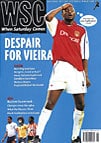 Despite vocal opposition at the time, the merger in Inverness seems to have worked, says Mark Palmer
Despite vocal opposition at the time, the merger in Inverness seems to have worked, says Mark Palmer
Fish and chips. Richard and Judy. Both perfect bedfellows. But try combining two football clubs with years of history and a mutual dislike on a similarly grand scale, and the path to true love is never likely to run smoothly. Such was the scenario for Caledonian and Inverness Thistle, two of the three clubs in Inverness until the early Nineties, who did the unthinkable in football circles – not only sleeping with the enemy, but going full steam ahead to marry them as well.
For a city (or a town, as it then was) of roughly 60,000 people, not having representation in the League was no longer palatable. Thistle had experienced an aborted attempt to gain entry to the upper echelons of the Scottish game in 1973, but when the prospect of league restructuring was mooted, the only viable option for the Highland capital appeared to be a merged bid from Caley and Thistle.
As with most things in modern football, finance was at the heart of the decision. The local business enterprise partnership, Inverness and Nairn Enterprise, who played a crucial role in the eventual success of the amalgamation, declared itself unable to support any club who wanted to go it alone. Neither was either club’s rickety wooden grandstands and decaying terraces likely to impress those whose votes would decide which of the bids from various non-League sides would be successful. A joint effort would also negate the possibility of votes being split between several independent Inverness presentations, with the very real chance that all could thus miss out.
So a united front it was, then. To any straight thinking observer this plan made perfect sense. Football fans are rarely a rational breed, though. It wasn’t long before supporters on both sides began to voice their dissatisfaction, to put it politely, at the prospect of their clubs melting into the realms of obscurity.
Finlays Bar, a favourite haunt of fans heading to Caley’s Telford Street home, became HQ for the “Caley Rebels” who sought to hamper efforts to realise this terrible union at every turn. A pitch invasion in Rothes led to the perpetrators being denied access to future home games. That wasn’t going to stop them. The Rebels hired a double-decker bus and perched themselves behind the roofless away end for a midweek clash with the third Inverness club Clachnacuddin (who had earlier declined to partake of the merger pie), complete with a banner directed at club secretary Jim Falconer – “So You Tried To Ban Us Mr Falconer”.
The protestors also disrupted proceedings on legal grounds. A members’ vote in favour of the merger was, they claimed, invalid because a two-thirds majority (necessary for the transfer of assets) had not been achieved. But in what was later dubbed the Battle of Rose Street Hall, a stormy meeting on December 1, 1993, the Rebels lost out by 250 votes to 226. This was replicated among the Thistle members. There was no going back. It was merger or nothing if Inverness was going to make it into the Scottish League.
Once the bid was accepted by the SFL (something which seemed a minor obstacle in an increasingly tempestuous climate) the dissidents focused their attentions on gaining as much ground as possible for their own sides in the new setup. The Caley Rebels were prepared to make few concessions, even objecting to a 25 per cent presence of Thistle colours in the new strip.
Strange times indeed. But those in charge were determined it was going to work, and they prevailed. Seven years, a slick custom-built stadium, two promotions and a 3-1 embarrassment of Celtic in the cup later, the success of the merger is beyond reproach. Some hardliners have started to follow the other local side, Ross County. Others just mutter grimly into their pints about the lost merits of Highland League football. You can’t please everybody.
Mergers that that never made it
May 2001: QPR and Wimbledon
Both clubs play down press reports that they have been in talks. Dons chairman Charles Koppel insists: “If the fans felt that this was not the best thing we would re-evaluate.” The fans do.
Feb 2000: Sheff Utd and Wednesday
Mooted by Wednesday shareholders Charterhouse. Derided by fans, though former United chairman Mike McDonald says: “Anyone in their right mind would argue that a merger is the logical thing.”
Jan 1999: Bury, Rochdale and Oldham
“Brainchild” of Oldham chairman Ian Stott, who says: “There will be hard-core fans who would be violently opposed, but I am sure they would come round in time.” Days later he resigns.
June 1990: Hearts and Hibs
Instigated by Hearts chairman Wallace Mercer with Hibs in dire financial straits. Kwik-Fit supremo Tom Farmer takes over Hibs a year later, but in 1999 Farmer suggests Mercer was right after all…
Feb 1987: Fulham and QPR
Marler Estates, owners of Fulham, try to move the club out in order to sell Craven Cottage. Merger blocked by the Football League after mass fan protests.
Feb 1987: Crystal Palace and WimbledonRon Noades and Sam Hammam propose Wimbledon should move in at Selhurst Park. Dons chief executive Colin Hutchinson resigns on principle.
April 1983: Reading and Oxford
Robert Maxwell announces his intention to buy Reading and merge the two clubs: “Without being presumptuous, we recommend to the chairmen of other clubs to consider whether in the interests of our beloved national sport the time is now right for many others to consider following this long overdue lead.” Merger ultimately fought off by Roger Smee and three dissenting Reading directors, supported by fan protests.
From WSC 174 August 2001. What was happening this month